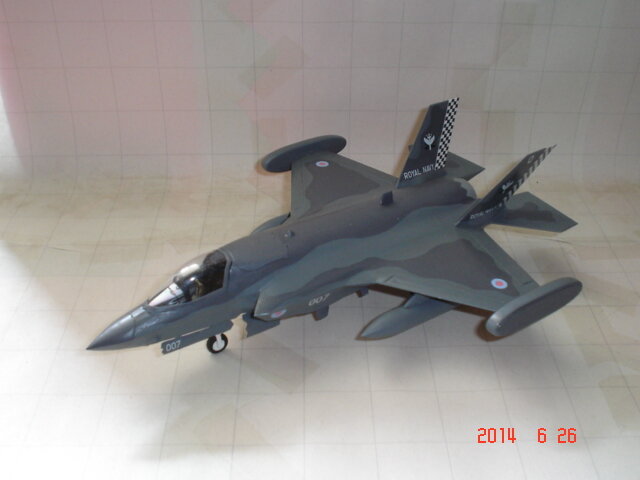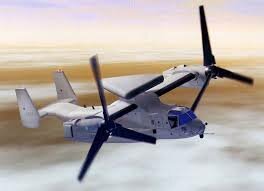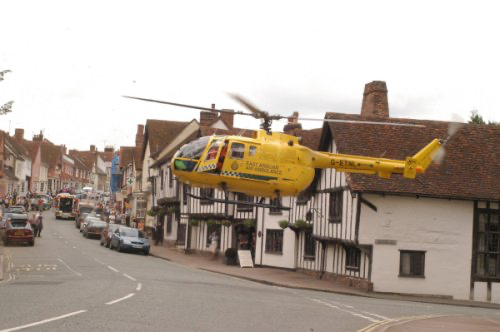I would see the designation "Nacelle" as a locator and not an indicator of the type of object subject to maintenance. Hence it should be understood that engines are included (what would explain the high value of the percentage).
You are using an out of date browser. It may not display this or other websites correctly.
You should upgrade or use an alternative browser.
You should upgrade or use an alternative browser.
Information and questions about the MV-22 / CV-22 Osprey
- Thread starter luedo34
- Start date
That's my thinking too. It therefore makes perfect sense.
- Joined
- 18 October 2006
- Messages
- 4,211
- Reaction score
- 4,920
I think that the logic of in the nacelles comes from the number of engine related systems, actuation gear, and assorted electrical gear that resides there. Some of the equipment is very difficult to access. Some even require the removal of perfectly serviceable equipment to get access to. The USMC long ago identified this as one of the main areas that needed improvement for the program. Since the nacelles were designed 30-40 years ago it certainly is likely that an improved computer (dare I say e-Nacelle) design could remedy some of the challenges.
- Joined
- 29 November 2010
- Messages
- 1,775
- Reaction score
- 3,479
any updates on any EV-22 variant for AEW?
last news was around 2016 ish
last news was around 2016 ish
- Joined
- 29 November 2010
- Messages
- 1,775
- Reaction score
- 3,479
oh cool, so it can replace an E-2?They named it F-35B
Yeah ----oh cool, so it can replace an E-2?They named it F-35B
Attachments
- Joined
- 29 November 2010
- Messages
- 1,775
- Reaction score
- 3,479
- Joined
- 9 October 2009
- Messages
- 21,976
- Reaction score
- 13,635
Though at the present time the Marine Corps is in total chaos, thanks to the insanity of its current leadership.
- Joined
- 18 October 2006
- Messages
- 4,211
- Reaction score
- 4,920
As much as I would like to see the RN (or UK in general) take on V-22 as part of their kit, I just don't see it happening. Especially since they can likely persuade the the US/USMC to embark a Squadron when necessary. Although they won't be able to exploit the capability for national missions, they would certainly be able to support NATO missions.
- Joined
- 9 October 2009
- Messages
- 21,976
- Reaction score
- 13,635
Given the rather dire state that the USN and USMC are in, I wouldn't count on that if I was in the RN's shoes.Especially since they can likely persuade the the US/USMC to embark a Squadron when necessary.
- Joined
- 8 January 2006
- Messages
- 1,612
- Reaction score
- 762
As the V-22 evolved and developed, equipment changes and associated wiring changes left a lot of extra, no-longer-used, wiring in the nacelles as well as the structure evolving. I would reckon a standardized nacelle design, including structure, would improve maintenance and reduce weight by taking out what was no longer needed. A standard fleet-wide nacelle design would also simplify record keeping and the spares that would need to be available.
- Joined
- 18 October 2006
- Messages
- 4,211
- Reaction score
- 4,920
If I am not mistaken the USMC admitted there were like ~60 variations of the MV-22 due to fleet maintenance and updates to units going down range and needing specific equipment added. They announced in 2019(?) a concerted effort to get all of the MV-22 standardized again. I imagine the nacelle is as mentioned a mess with all of those changes.As the V-22 evolved and developed, equipment changes and associated wiring changes left a lot of extra, no-longer-used, wiring in the nacelles as well as the structure evolving. I would reckon a standardized nacelle design, including structure, would improve maintenance and reduce weight by taking out what was no longer needed. A standard fleet-wide nacelle design would also simplify record keeping and the spares that would need to be available.
Last edited:
isayyo2
Lurker alert
- Joined
- 24 November 2011
- Messages
- 1,131
- Reaction score
- 2,330
Their CC-RAM program is consolidating 77 subvariants into 17, pretty wild there are 77 variants hiding under the B model name!If I am not mistaken the USMC admitted there were like ~60 variations of the MV-22 due to fleet maintenance and updates to units going down range and needing specific equipment added. They announced in 2019(?) a concerted effort to get all of the MV-22 standardized again. I imagine the nacelle is as mentioned a mess with all of those changs.As the V-22 evolved and developed, equipment changes and associated wiring changes left a lot of extra, no-longer-used, wiring in the nacelles as well as the structure evolving. I would reckon a standardized nacelle design, including structure, would improve maintenance and reduce weight by taking out what was no longer needed. A standard fleet-wide nacelle design would also simplify record keeping and the spares that would need to be available.
RavenOne
ACCESS: Top Secret
- Joined
- 18 June 2008
- Messages
- 1,005
- Reaction score
- 2,689
The V-22 fleet surpasses 600,000 flight hours
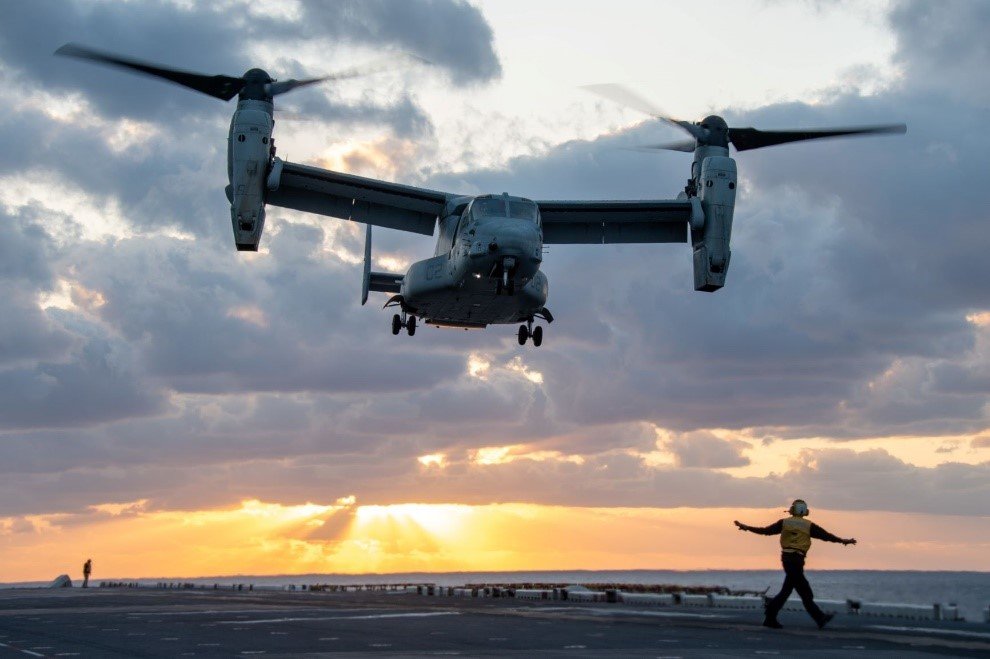
 news.bellflight.com
news.bellflight.com
cheers

THE BELL BOEING V-22 OSPREY SOARS PAST 600,000 FLEET FLIGHT HOURS
Demand for unique tiltrotor capabilities pushes fleet to record usage
cheers
- Joined
- 8 January 2006
- Messages
- 1,612
- Reaction score
- 762
Their CC-RAM program is consolidating 77 subvariants into 17, pretty wild there are 77 variants hiding under the B model name!
Not that wild; I've worked on the nacelle and I can easily believe it. I know of two major structural variants and I don't know how many minor ones, the same with equipment fit and wiring. A lot of it comes as the design gets refined with experience.Their CC-RAM program is consolidating 77 subvariants into 17, pretty wild there are 77 variants hiding under the B model name!If I am not mistaken the USMC admitted there were like ~60 variations of the MV-22 due to fleet maintenance and updates to units going down range and needing specific equipment added. They announced in 2019(?) a concerted effort to get all of the MV-22 standardized again. I imagine the nacelle is as mentioned a mess with all of those changs.As the V-22 evolved and developed, equipment changes and associated wiring changes left a lot of extra, no-longer-used, wiring in the nacelles as well as the structure evolving. I would reckon a standardized nacelle design, including structure, would improve maintenance and reduce weight by taking out what was no longer needed. A standard fleet-wide nacelle design would also simplify record keeping and the spares that would need to be available.
- Joined
- 18 October 2006
- Messages
- 4,211
- Reaction score
- 4,920
V-22 Upgrades in Works as Aircraft Passes Milestones
4/14/2021
By Nick Adde
Marine Corps Col. Matthew Kelly recalls being deployed to Iraq in 2008, when the Bell Boeing MV-22 Osprey made its in-theater debut.
Turned off by the aircraft’s sheer newness and casting a leery eye toward its tiltrotor design, flag officers and VIPs were nearly universal in their initial aversion to flying in one.
“If they had to get somewhere, they said, ‘Listen — I’m taking my helicopter. I know what it does,’” Kelly said.
This changed, however, when they saw how quickly the Osprey could transport them from one end of the country to the other while flying as high as 25,000 feet, an altitude exceeding any threat posed by insurgents’ ground-based weapons.
“All of a sudden, the entire flight schedule was booked,” Kelly told National Defense. “No senior officer wanted to go anywhere unless they could fly on the V-22, because it was fast and safe. It really opened a lot of people’s eyes, even without seeing it do its primary assault missions and what it could bring to combat.”
A fixed-wing pilot by trade, Kelly is now the program manager for the entire V-22 project, with the Patuxent River Naval Air Station,
Maryland-based Naval Air Systems Command (NAVAIR). As such, he manages the development, sustainment and procurement of all V-22 aircraft throughout the Defense Department, as well as any present and future foreign military sales users.
With the aircraft having proved its utility many times over since its introduction to the Marine Corps’ inventory in 1999, Kelly’s main job now is overseeing the shift toward its maintenance and sustainability and away from production.
NAVAIR has received funding for the third and likely final multi-year lot, Kelly told an audience during a Feb. 22 vertical take-off and landing conference, a virtual event sponsored by The Patuxent Partnership. The production line will remain open for potential additional orders, Kelly said, possibly up until sometime in fiscal year 2023.
Bell Boeing delivered the 400th aircraft to customers last year. Its mission is expanding as new users come online. The Navy is planning to use the CMV-22 variant as a replacement of the Grumman C-2 Greyhound for carrier onboard delivery. The service marked a milestone last November, when a CMV-22B conducted the first carrier landings, take-offs and refueling on the USS Carl Vinson. COD deployments should begin sometime later this year. Additionally, the service awarded a $309.5 million contract to produce and deliver four CMV-22B aircraft by March 2025.
Air Force Special Operations Command is using another variant, the CV-22, for long-range infiltration, exfiltration and resupply missions.
As the Osprey’s initial customer and primary user, the Marine Corps remains committed to using it as the primary mode of speedily moving troops from ship to shore and into a combat zone.
The platform’s success has garnered considerable interest from international partners as well. The Japanese Self-Defense Forces became the first foreign military sales customer in 2015, and began operations in earnest last November at Kisarazu Air Field.
“These [Japanese] aircraft support the United States military with multi-mission capabilities,” Shane Openshaw of Bell Boeing said in an interview. Openshaw is deputy director of the company’s V-22 program, and Boeing’s vice president for tiltrotor programs.
Two other nations — Israel and Indonesia — are considering acquisition of the V-22, Kelly added.
As the Osprey’s maturation process continues, it is demonstrating the ability to perform missions that both meet and exceed expectations.
Kelly cited a mission the Marines performed in early 2020, to confront a threat that demonstrators posed to the U.S. Embassy in Baghdad.
“The two Ospreys were the quickest and fastest way to get Marines into that compound, to ensure the safety of that entity. That’s precisely the mission we bought it for,” Kelly said.
Successes like the Baghdad operation worked to convince AFSOC that the decision to acquire the Osprey was a sound one.
“They knew they could use it for that long-range infiltration mission, where they’re trying to insert special operators either by paradrop or landing to a specific site,” Kelly said. “More importantly, they could then pick up and exfiltrate those combat troops quickly.”
Like the Marines, AFSOC has found the Osprey platform useful for rapid resupply of food, ammunition, weapons and several types of smaller vehicles that can fit in its cargo space.
As the Navy is in the early stages of incorporating the aircraft into the delivery mission, it too is finding new uses and advantages its predecessor could not provide, such as in-flight refueling capability. It can carry 6,000 pounds of cargo 1,100 nautical miles — enough to carry, for instance, an F-35 engine power module out to an aircraft carrier. The Osprey performed this exact task in late February for the first time, delivering a module to the Carl Vinson somewhere in the Pacific Ocean.
“If the V-22 has to interact with another ship in the carrier strike group, it can do that too,” Kelly said.
The flight decks on a wide array of Navy vessels — to include San Antonio-class amphibious transport docks, Wasp-class amphibious assault ships and landing helicopter assault ships, in addition to carriers and littoral combat ships — can accommodate the Osprey.
Describing the aircraft as “a pleasure to fly,” Kelly believes he is echoing the opinion of other pilots in the aviation community.
“I’ve flown it, and I’ve also flown the F-35 [joint strike fighter], so I’ve hovered in a fixed-wing aircraft and the V-22,” he said. “For as big an airplane as it is, you can control it with a lot of precision. It’s very handy when you’re landing it on board a ship.”
In airplane mode, Kelly said, it feels more like a C-130 Hercules and flies at a comparable airspeed, without the vibrations and shaking of a conventional helicopter. The services do not keep statistics as to whether fixed-wing or rotary pilots find the transition to the Osprey easier to grasp, he said.
“In a fixed-wing, you’re doing a lot more instrument flying. When you’re landing, you just need to look forward down the runway. The fixed-wing pilots tend to have an advantage there,” Kelly explained. “Rotary-wing pilots are used to looking outside and scanning with their heads a lot more, to judge your forward drift. They’re used to those sorts of tasks in the slower environment, as you would expect. So both pilots bring different parts of that to the mission.”
With the Osprey now well ensconced as an integral part of the inventory, work continues on current and future upgrades. Earlier this year, NAVAIR awarded an $81 million contract to develop and install modified nacelle kits and conversion harnesses for the CV-22. Situated at the end of each wing, nacelles provide housing for the plane’s key power and propulsion components. They also hold the wiring bundles that feed systems throughout the aircraft and serve the system that converts the Osprey from vertical to horizontal flight and back.
“Approximately 60 percent of maintenance man-hours are spent in the nacelles,” Air Force Col. Brian Clifford, CV-22 program manager, said in a NAVAIR press release.
Refinement of the nacelle design should reduce time spent getting repairs and improve readiness, Clifford said. The work will take place at Bell’s Amarillo, Texas, facility. The Marine Corps and Navy also are considering the same upgrade.
A number of other major sustainment issues are currently on the table, Kelly said. The older Marine aircraft are undergoing a common configuration, readiness and modernization program, which would bring systems on 2010 aircraft up to 2020 standards. The roughly 60 modifications include new mission computers, a better weather radar and scratch-resistant wind screens, he said. The handful of aircraft that have completed the process have demonstrated increases in readiness rates, as well as a decreased need for maintenance man-hours.
Plans also call for an improved helmet-mounted display for the MV-22, akin to those available on other newer aircraft.
“We’re looking to use it for the degraded visual environment during brown-out landings,” Kelly said. “That [display] is going to provide the pilot with a ground reference and information that will allow him to keep his situational awareness cueing, even when there is no outside visual.”
The V-22 program office recently completed an in-house study that analyzed sustainment of the Osprey’s medium-lift capability for the near- and mid-future, Kelly told the virtual audience. Based on its findings, the command planned an industry day in March to garner ideas.
In the meantime, he said, the command has engaged in discussions with the Marine Corps about further improving survivability, and establishing the ability to operate an assault-support platform in high-threat environments.
“We’re used to going 280 knots,” Kelly told the audience. “What about 550 knots? What does that buy us?”
As open-ended as this statement-question is, Kelly and his colleagues believe they have a firm handle on what the Osprey brings to the table.
“The V-22 is a unique aircraft. The speed, range, vertical take-off and landing capabilities — no other aircraft can match those things,” Kelly said. “It suits itself to many different missions, and will continue to play a key role in the Marine Corps, AFSOC, the Navy, and now our foreign partner — Japan. We’re really proud of the work the pilots, air crews and maintainers do, and we’re looking forward to another 30 to 40 years of flying the V-22.”
While the three aforementioned services have found a place for the Osprey, the Army is considering a variant as a potential future replacement for the venerable Sikorsky UH-60 Black Hawk helicopter.
The Bell V-280 Valor tiltrotor aircraft has undergone more than 200 flight hours in more than 150 individual test flights under a competitive contract during the past three years as part of the Army’s Future Long-Range Assault Aircraft program. Valor’s competition for the contract is Sikorsky-Boeing’s SB-1 Defiant helicopter, which closely resembles a conventional helicopter but is powered primarily by top-mounted coaxial rotors.
4/14/2021
By Nick Adde
Marine Corps Col. Matthew Kelly recalls being deployed to Iraq in 2008, when the Bell Boeing MV-22 Osprey made its in-theater debut.
Turned off by the aircraft’s sheer newness and casting a leery eye toward its tiltrotor design, flag officers and VIPs were nearly universal in their initial aversion to flying in one.
“If they had to get somewhere, they said, ‘Listen — I’m taking my helicopter. I know what it does,’” Kelly said.
This changed, however, when they saw how quickly the Osprey could transport them from one end of the country to the other while flying as high as 25,000 feet, an altitude exceeding any threat posed by insurgents’ ground-based weapons.
“All of a sudden, the entire flight schedule was booked,” Kelly told National Defense. “No senior officer wanted to go anywhere unless they could fly on the V-22, because it was fast and safe. It really opened a lot of people’s eyes, even without seeing it do its primary assault missions and what it could bring to combat.”
A fixed-wing pilot by trade, Kelly is now the program manager for the entire V-22 project, with the Patuxent River Naval Air Station,
Maryland-based Naval Air Systems Command (NAVAIR). As such, he manages the development, sustainment and procurement of all V-22 aircraft throughout the Defense Department, as well as any present and future foreign military sales users.
With the aircraft having proved its utility many times over since its introduction to the Marine Corps’ inventory in 1999, Kelly’s main job now is overseeing the shift toward its maintenance and sustainability and away from production.
NAVAIR has received funding for the third and likely final multi-year lot, Kelly told an audience during a Feb. 22 vertical take-off and landing conference, a virtual event sponsored by The Patuxent Partnership. The production line will remain open for potential additional orders, Kelly said, possibly up until sometime in fiscal year 2023.
Bell Boeing delivered the 400th aircraft to customers last year. Its mission is expanding as new users come online. The Navy is planning to use the CMV-22 variant as a replacement of the Grumman C-2 Greyhound for carrier onboard delivery. The service marked a milestone last November, when a CMV-22B conducted the first carrier landings, take-offs and refueling on the USS Carl Vinson. COD deployments should begin sometime later this year. Additionally, the service awarded a $309.5 million contract to produce and deliver four CMV-22B aircraft by March 2025.
Air Force Special Operations Command is using another variant, the CV-22, for long-range infiltration, exfiltration and resupply missions.
As the Osprey’s initial customer and primary user, the Marine Corps remains committed to using it as the primary mode of speedily moving troops from ship to shore and into a combat zone.
The platform’s success has garnered considerable interest from international partners as well. The Japanese Self-Defense Forces became the first foreign military sales customer in 2015, and began operations in earnest last November at Kisarazu Air Field.
“These [Japanese] aircraft support the United States military with multi-mission capabilities,” Shane Openshaw of Bell Boeing said in an interview. Openshaw is deputy director of the company’s V-22 program, and Boeing’s vice president for tiltrotor programs.
Two other nations — Israel and Indonesia — are considering acquisition of the V-22, Kelly added.
As the Osprey’s maturation process continues, it is demonstrating the ability to perform missions that both meet and exceed expectations.
Kelly cited a mission the Marines performed in early 2020, to confront a threat that demonstrators posed to the U.S. Embassy in Baghdad.
“The two Ospreys were the quickest and fastest way to get Marines into that compound, to ensure the safety of that entity. That’s precisely the mission we bought it for,” Kelly said.
Successes like the Baghdad operation worked to convince AFSOC that the decision to acquire the Osprey was a sound one.
“They knew they could use it for that long-range infiltration mission, where they’re trying to insert special operators either by paradrop or landing to a specific site,” Kelly said. “More importantly, they could then pick up and exfiltrate those combat troops quickly.”
Like the Marines, AFSOC has found the Osprey platform useful for rapid resupply of food, ammunition, weapons and several types of smaller vehicles that can fit in its cargo space.
As the Navy is in the early stages of incorporating the aircraft into the delivery mission, it too is finding new uses and advantages its predecessor could not provide, such as in-flight refueling capability. It can carry 6,000 pounds of cargo 1,100 nautical miles — enough to carry, for instance, an F-35 engine power module out to an aircraft carrier. The Osprey performed this exact task in late February for the first time, delivering a module to the Carl Vinson somewhere in the Pacific Ocean.
“If the V-22 has to interact with another ship in the carrier strike group, it can do that too,” Kelly said.
The flight decks on a wide array of Navy vessels — to include San Antonio-class amphibious transport docks, Wasp-class amphibious assault ships and landing helicopter assault ships, in addition to carriers and littoral combat ships — can accommodate the Osprey.
Describing the aircraft as “a pleasure to fly,” Kelly believes he is echoing the opinion of other pilots in the aviation community.
“I’ve flown it, and I’ve also flown the F-35 [joint strike fighter], so I’ve hovered in a fixed-wing aircraft and the V-22,” he said. “For as big an airplane as it is, you can control it with a lot of precision. It’s very handy when you’re landing it on board a ship.”
In airplane mode, Kelly said, it feels more like a C-130 Hercules and flies at a comparable airspeed, without the vibrations and shaking of a conventional helicopter. The services do not keep statistics as to whether fixed-wing or rotary pilots find the transition to the Osprey easier to grasp, he said.
“In a fixed-wing, you’re doing a lot more instrument flying. When you’re landing, you just need to look forward down the runway. The fixed-wing pilots tend to have an advantage there,” Kelly explained. “Rotary-wing pilots are used to looking outside and scanning with their heads a lot more, to judge your forward drift. They’re used to those sorts of tasks in the slower environment, as you would expect. So both pilots bring different parts of that to the mission.”
With the Osprey now well ensconced as an integral part of the inventory, work continues on current and future upgrades. Earlier this year, NAVAIR awarded an $81 million contract to develop and install modified nacelle kits and conversion harnesses for the CV-22. Situated at the end of each wing, nacelles provide housing for the plane’s key power and propulsion components. They also hold the wiring bundles that feed systems throughout the aircraft and serve the system that converts the Osprey from vertical to horizontal flight and back.
“Approximately 60 percent of maintenance man-hours are spent in the nacelles,” Air Force Col. Brian Clifford, CV-22 program manager, said in a NAVAIR press release.
Refinement of the nacelle design should reduce time spent getting repairs and improve readiness, Clifford said. The work will take place at Bell’s Amarillo, Texas, facility. The Marine Corps and Navy also are considering the same upgrade.
A number of other major sustainment issues are currently on the table, Kelly said. The older Marine aircraft are undergoing a common configuration, readiness and modernization program, which would bring systems on 2010 aircraft up to 2020 standards. The roughly 60 modifications include new mission computers, a better weather radar and scratch-resistant wind screens, he said. The handful of aircraft that have completed the process have demonstrated increases in readiness rates, as well as a decreased need for maintenance man-hours.
Plans also call for an improved helmet-mounted display for the MV-22, akin to those available on other newer aircraft.
“We’re looking to use it for the degraded visual environment during brown-out landings,” Kelly said. “That [display] is going to provide the pilot with a ground reference and information that will allow him to keep his situational awareness cueing, even when there is no outside visual.”
The V-22 program office recently completed an in-house study that analyzed sustainment of the Osprey’s medium-lift capability for the near- and mid-future, Kelly told the virtual audience. Based on its findings, the command planned an industry day in March to garner ideas.
In the meantime, he said, the command has engaged in discussions with the Marine Corps about further improving survivability, and establishing the ability to operate an assault-support platform in high-threat environments.
“We’re used to going 280 knots,” Kelly told the audience. “What about 550 knots? What does that buy us?”
As open-ended as this statement-question is, Kelly and his colleagues believe they have a firm handle on what the Osprey brings to the table.
“The V-22 is a unique aircraft. The speed, range, vertical take-off and landing capabilities — no other aircraft can match those things,” Kelly said. “It suits itself to many different missions, and will continue to play a key role in the Marine Corps, AFSOC, the Navy, and now our foreign partner — Japan. We’re really proud of the work the pilots, air crews and maintainers do, and we’re looking forward to another 30 to 40 years of flying the V-22.”
While the three aforementioned services have found a place for the Osprey, the Army is considering a variant as a potential future replacement for the venerable Sikorsky UH-60 Black Hawk helicopter.
The Bell V-280 Valor tiltrotor aircraft has undergone more than 200 flight hours in more than 150 individual test flights under a competitive contract during the past three years as part of the Army’s Future Long-Range Assault Aircraft program. Valor’s competition for the contract is Sikorsky-Boeing’s SB-1 Defiant helicopter, which closely resembles a conventional helicopter but is powered primarily by top-mounted coaxial rotors.
archipeppe
ACCESS: Top Secret
- Joined
- 18 October 2007
- Messages
- 2,431
- Reaction score
- 3,152
After the qualification process with the F-35B, the Italian Aircraft Carrier Cavour undergone an analogue qualification process with the MV-22B of USMC:

 theaviationist.com
theaviationist.com

U.S. Marine Corps MV-22B Osprey Conducts Qualifications Flights Aboard Italian Aircraft Carrier Cavour
After completing the Sea Trials with the U.S. Marine Corps F-35B, the aircraft carrier Cavour conducted training with a USMC MV-22B Osprey. As already
archipeppe
ACCESS: Top Secret
- Joined
- 18 October 2007
- Messages
- 2,431
- Reaction score
- 3,152
This could be either because Italy is closely looking at MV-22 and/or because US Navy/USMC is closely looking at Cavour carrier.After the qualification process with the F-35B, the Italian Aircraft Carrier Cavour undergone an analogue qualification process with the MV-22B of USMC:

U.S. Marine Corps MV-22B Osprey Conducts Qualifications Flights Aboard Italian Aircraft Carrier Cavour
After completing the Sea Trials with the U.S. Marine Corps F-35B, the aircraft carrier Cavour conducted training with a USMC MV-22B Osprey. As alreadytheaviationist.com
If they have embedded operations the USMC/USN would need their usual logistical support.
Here is the Osprey on the French carrier CdG:
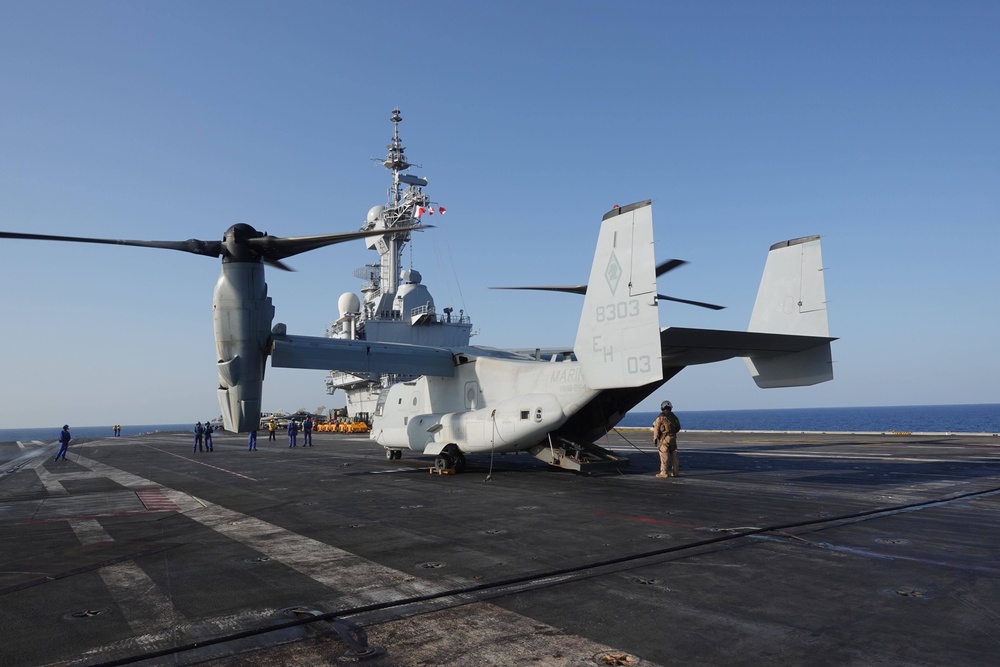
 www.dvidshub.net
www.dvidshub.net
Here is the Osprey on the French carrier CdG:

Ospreys land on French Aircraft Carrier, Charles De Gaulle
A U.S. Marine MV-22 Osprey with the 22nd Marine Expeditionary Unit (MEU) sits on the flight deck of France’s Marine Nationale aircraft carrier FS Charles De Gaulle (R 91), April 22, 2019. This was the second time that Ospreys have landed aboard the French vessel. Marines and Sailors with the...
- Joined
- 18 October 2006
- Messages
- 4,211
- Reaction score
- 4,920
This could be either because Italy is closely looking at MV-22 and/or because US Navy/USMC is closely looking at Cavour carrier.After the qualification process with the F-35B, the Italian Aircraft Carrier Cavour undergone an analogue qualification process with the MV-22B of USMC:

U.S. Marine Corps MV-22B Osprey Conducts Qualifications Flights Aboard Italian Aircraft Carrier Cavour
After completing the Sea Trials with the U.S. Marine Corps F-35B, the aircraft carrier Cavour conducted training with a USMC MV-22B Osprey. As alreadytheaviationist.com
While I personally would recommend V-22 to any allied nation with power projection missions, I will be surprised if V-22 is taken on due to the current maintenance expense. However as mentioned Italy may be interested in FVL (tilt rotor) as a updated and hopefully less expensive alternative. Let's not forget that the Leonardo AW-609 is soon to be going into production and I believe there are already para-military forces that have expressed interest. Also the demonstration of a tilt rotor on the carrier may provide motivation for other Leonardo tilt rotor activities.This could be either because Italy is closely looking at MV-22 and/or because US Navy/USMC is closely looking at Cavour carrier.After the qualification process with the F-35B, the Italian Aircraft Carrier Cavour undergone an analogue qualification process with the MV-22B of USMC:

U.S. Marine Corps MV-22B Osprey Conducts Qualifications Flights Aboard Italian Aircraft Carrier Cavour
After completing the Sea Trials with the U.S. Marine Corps F-35B, the aircraft carrier Cavour conducted training with a USMC MV-22B Osprey. As alreadytheaviationist.com

Watch This CV-22 Osprey's Rotor Downwash Absolutely Demolish A Hospital's Helipad
The Osprey's beastly rotor blast is notoriously powerful, as is showcased in this crazy video clip.
RavenOne
ACCESS: Top Secret
- Joined
- 18 June 2008
- Messages
- 1,005
- Reaction score
- 2,689
That’s my neck of the woods my local hospital yes I was there As saw the 352nd media post about the Training exercise. I was stood inside the helipad but opposite thr guys who filmed (one of which I know ) here are my photos when it landed..
Watch This CV-22 Osprey's Rotor Downwash Absolutely Demolish A Hospital's Helipad
The Osprey's beastly rotor blast is notoriously powerful, as is showcased in this crazy video clip.www.thedrive.com
That helipad is only meant to be a temporary one as a decade ago 220,000 quid was allocated to construct a proper helipad for Addenbrookes, it might have even been a rooftop one on the new ATC (Addenbrookes Treatment Center) as the Hospital was and still and undergoing constant modernization. But it did not materialize. Before this pad there was another temp one couple of hundred yards around the corner and before that about 3/4 to mile away nesr golf course the EMs helicopters would land then ground transportation would take the patient / trauma victims to the A&E (ER to you folks in the states).
Here are my photos and no I did not see the rubber mats fly into the air on take off as
1) almost brown out conditions
2) where I was stood more interested in getting shots in the air as my sensor couldn’t pick out as lifted few feet from the ground.
3) my acquaintances the other side of the fence caught the downwash and the mats close at Hand but no one was hurt.
4) I don’t like how the local and national media are stirring things up and leading to anti american Thoughts and opinions, the 7th SOS crews from Mildenhall are pretty professional ImHO having dealt with them over the years.
cheers
Attachments
-
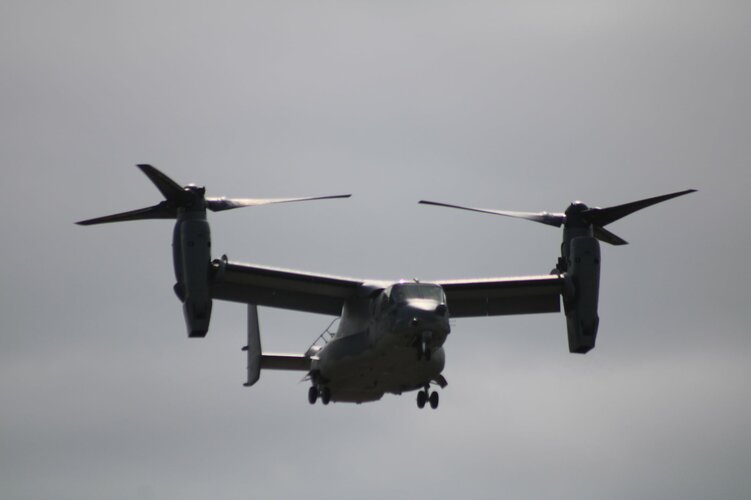 88DCA409-E06F-4469-B267-CFCA8ADC2EF9.jpeg67.6 KB · Views: 23
88DCA409-E06F-4469-B267-CFCA8ADC2EF9.jpeg67.6 KB · Views: 23 -
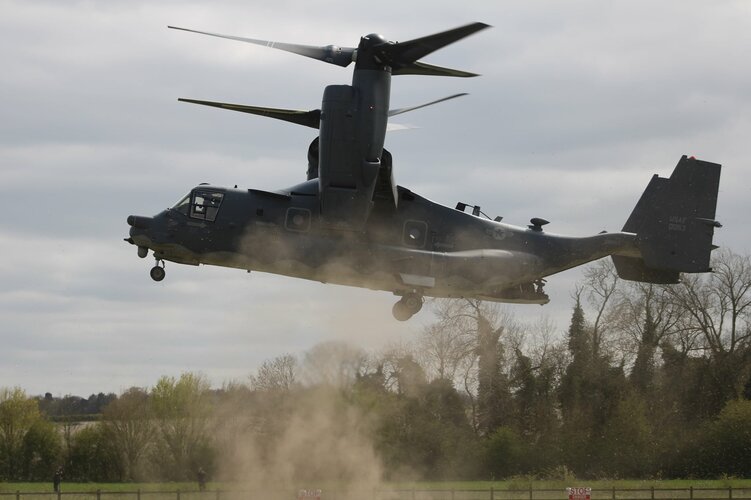 8B0EE28E-28BE-4155-A748-3F1ECCC515CC.jpeg204.4 KB · Views: 16
8B0EE28E-28BE-4155-A748-3F1ECCC515CC.jpeg204.4 KB · Views: 16 -
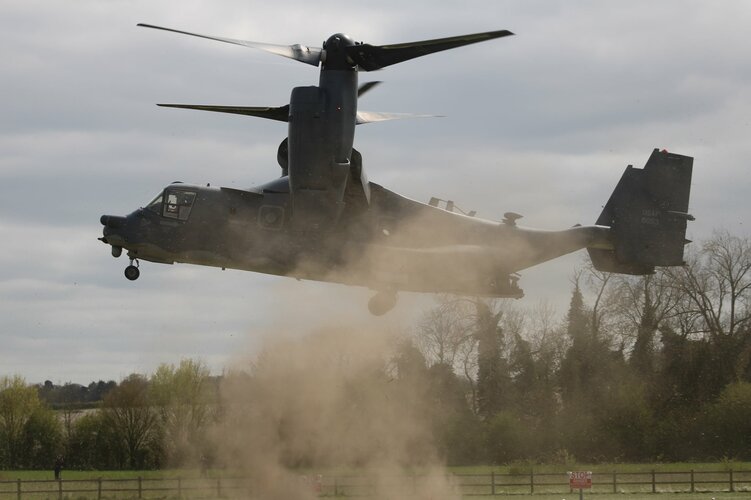 B2153F6A-8EED-402B-8413-844E6FFCC8D2.jpeg176.8 KB · Views: 15
B2153F6A-8EED-402B-8413-844E6FFCC8D2.jpeg176.8 KB · Views: 15 -
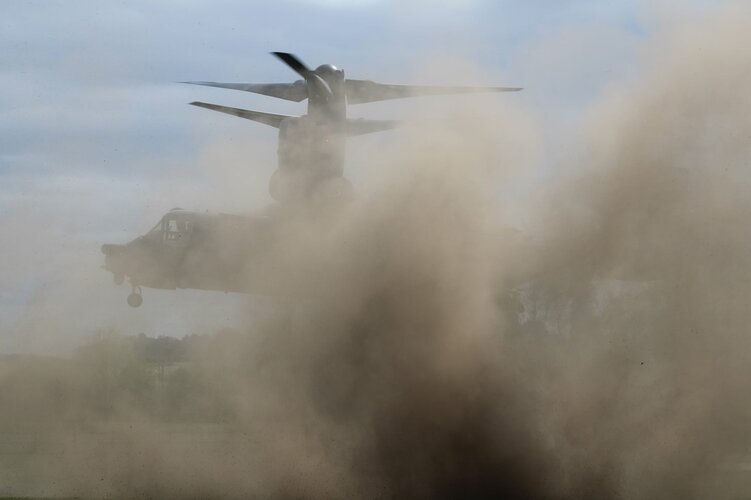 7CD9B697-11E5-42C6-B3B7-D44AF0B29F56.jpeg86.3 KB · Views: 13
7CD9B697-11E5-42C6-B3B7-D44AF0B29F56.jpeg86.3 KB · Views: 13 -
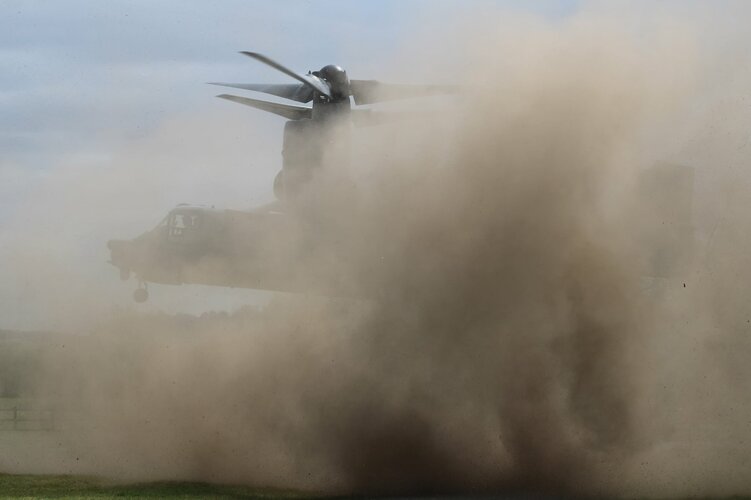 B2B01A70-9C7A-4D1D-B8DF-39F3557A61F5.jpeg94.7 KB · Views: 14
B2B01A70-9C7A-4D1D-B8DF-39F3557A61F5.jpeg94.7 KB · Views: 14 -
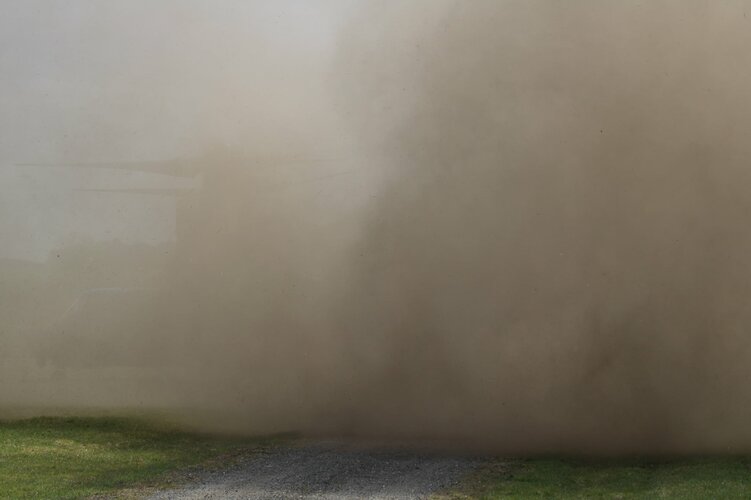 68D6C5D3-67B8-44C9-A67A-8FCE45232044.jpeg102.4 KB · Views: 18
68D6C5D3-67B8-44C9-A67A-8FCE45232044.jpeg102.4 KB · Views: 18 -
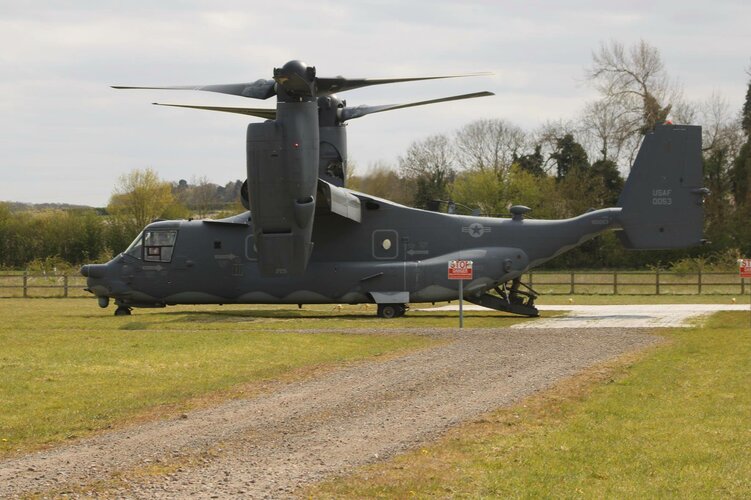 1B9F2409-0AD5-4341-AC02-4622457D3621.jpeg313 KB · Views: 17
1B9F2409-0AD5-4341-AC02-4622457D3621.jpeg313 KB · Views: 17 -
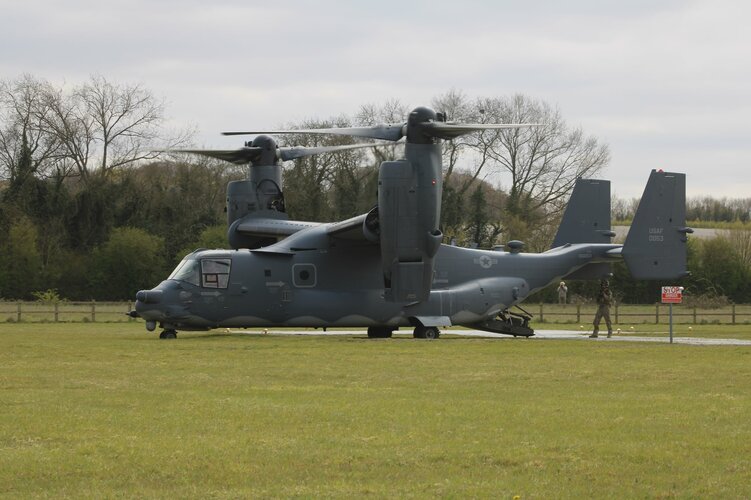 E39F3860-C11F-4ED6-9284-A2D8CF54EBF6.jpeg333.2 KB · Views: 20
E39F3860-C11F-4ED6-9284-A2D8CF54EBF6.jpeg333.2 KB · Views: 20 -
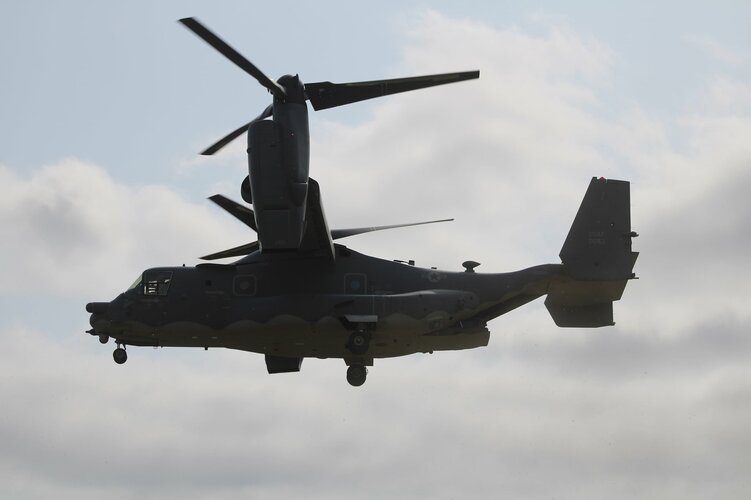 DE0687FD-92BB-4980-A894-C968849FFE3C.jpeg87.1 KB · Views: 38
DE0687FD-92BB-4980-A894-C968849FFE3C.jpeg87.1 KB · Views: 38
Last edited:
Hi Raven, thought of you when i posted this!That’s my neck of the woods my local hospital yes I was there As saw the 352nd media post about the Training exercise. I was stood inside the helipad but opposite thr guys who filmed (one of which I know ) here are my photos when it landed..
Watch This CV-22 Osprey's Rotor Downwash Absolutely Demolish A Hospital's Helipad
The Osprey's beastly rotor blast is notoriously powerful, as is showcased in this crazy video clip.www.thedrive.com
That helipad is only meant to be a temporary one as a decade ago 220,000 quid was allocated to construct a proper helipad for Addenbrookes, it might have even been a rooftop one on the new ATC (Addenbrookes Treatment Center) as the Hospital was and still and undergoing constant modernization. But it did not materialize. Before this pad there was another temp one couple of hundred yards around the corner and before that about 3/4 to mile away nesr golf course the EMs helicopters would land then ground transportation would take the patient / trauma victims to the A&E (ER to you folks in the states).
Here are my photos and no I did not see the rubber mats fly into he air on take off as
1) almost brown out conditions
2) where I was stood more interested in getting shots in the air as my sensor couldn’t pick out as lifted few feet from the ground.
3) my acquaintances the other side of the fence caught lol the downwash and mats close Hand but no one got even remotely in danger.
4) I don’t like how the local and national media are stirring things up and leading to anti american Thoughts and opinions, the 7th SOS crews from Mildenhall are pretty professional ImHO having dealt with them over the years.
cheers
My old neck of the woods, moved away 18 months ago, yep the USAF guys always seemed good.
I've picked up a few patients over the years from the Cambridge golf course years before all this! and transported the to Adds
- Joined
- 9 October 2009
- Messages
- 21,976
- Reaction score
- 13,635
Sailors assigned to the “Argonauts” of Strike Fighter Squadron (VFA) 147 load an F-35C Lightning II power module onto a CMV-22B Osprey assigned to the “Titans” of Fleet Logistics Multi-Mission Squadron (VRM) 30 on the flight deck of Nimitz-class nuclear aircraft carrier USS Carl Vinson (CVN 70). Mass Communication Specialist Seaman Jeffrey Kempton/US Navy.
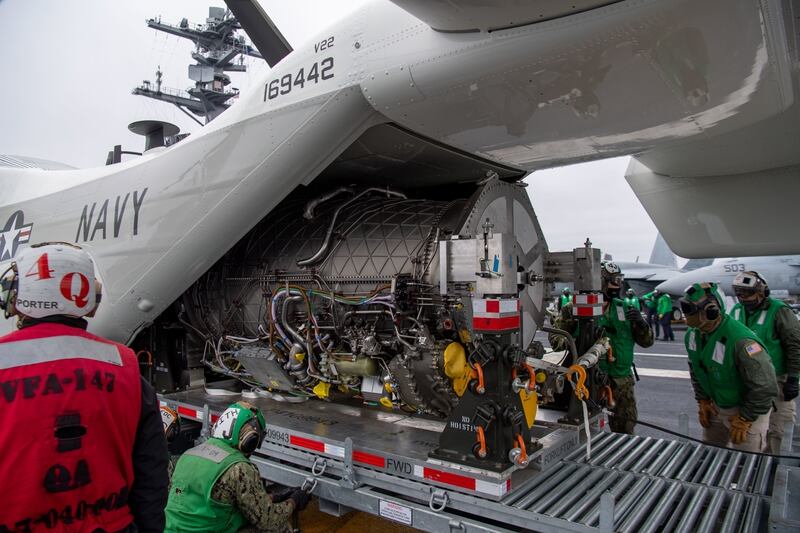

Carl Vinson strike group using first deployment with F-35C, beefed-up air wing to hone advanced operations
The air wing the Carl Vinson Carrier Strike Group is hauling around includes the F-35C Joint Strike Fighter and a beefed-up complement of EA-18G Growlers and E-2D Advanced Hawkeyes for an “air wing of the future” that leaders think can defeat high-end adversaries before they even spot the U.S...
- Joined
- 9 October 2009
- Messages
- 21,976
- Reaction score
- 13,635
- Joined
- 9 October 2009
- Messages
- 21,976
- Reaction score
- 13,635

USAF Special Operations Squadron receives first CV-22 with nacelle improvement modifications
The U.S. Air Force has announced that U.S. Air Force Airmen assigned to the 20th Special Operations Squadron familiarize themselves with the new nacelle improvement modifications on a CV-22 Osprey tilt-rotor aircraft at Cannon Air Force Base, N.M., Jan. 7, 2022. According to a press release...
RavenOne
ACCESS: Top Secret
- Joined
- 18 June 2008
- Messages
- 1,005
- Reaction score
- 2,689
We maintained those as back in the day 3 decades ago provided the first uk HEMS …BO105 based at RAF Cosford belonging to Midlands Air Ambulance Charity.Back when the East of England Air Ambulance started the pilots didn't worry about nice big landing areas:Back up and running now
cheers
View attachment 655764
cheers
CMV-22B IOC:
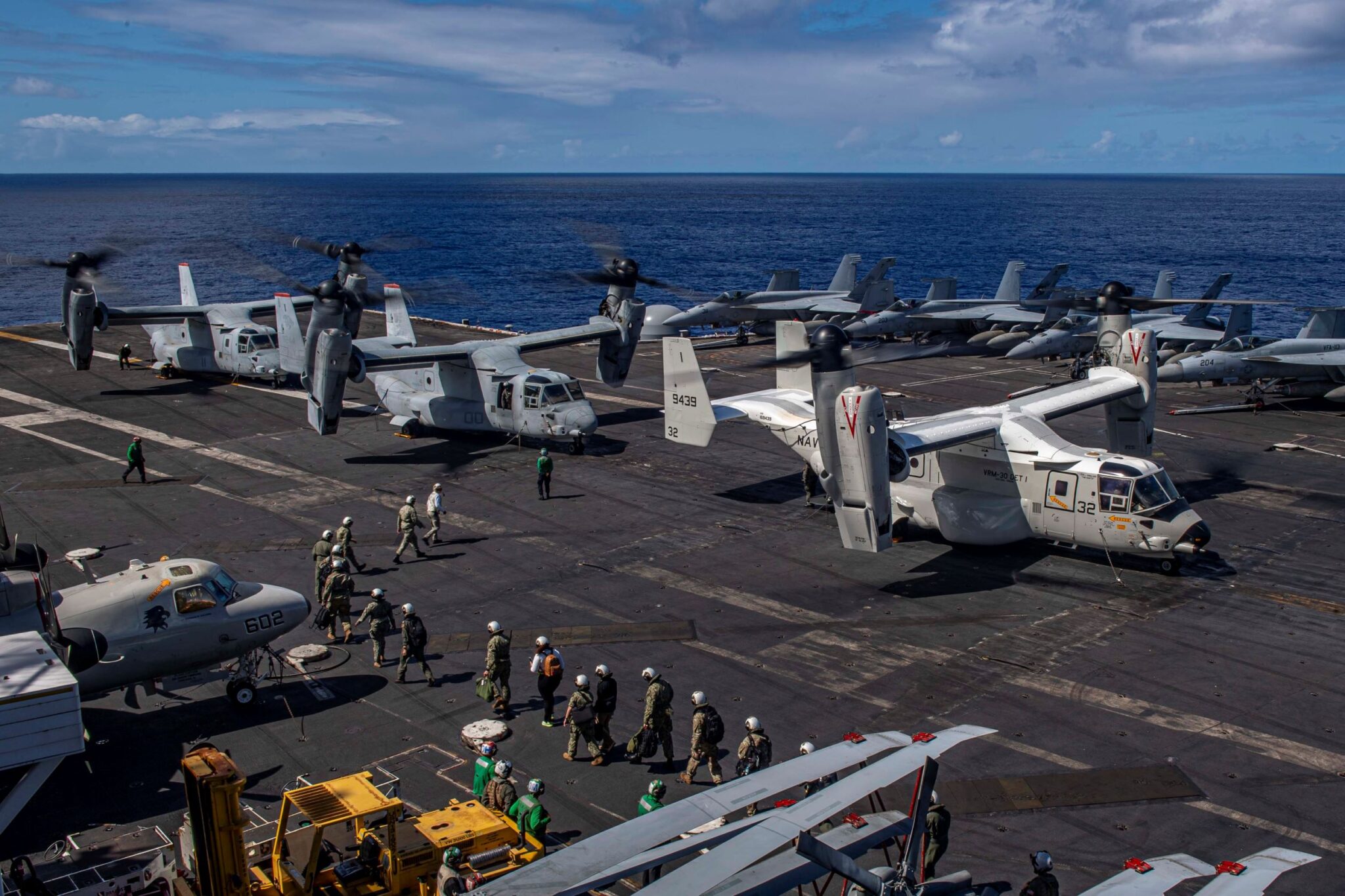
 seapowermagazine.org
seapowermagazine.org
This past summer marked the first deployment for the CMV-22B. Fleet Logistics Multi-Mission Squadron (VRM) 30 embarked on the USS Carl Vinson alongside the F-35C Lightning II and E-2D Advanced Hawkeye squadrons. The first deployed detachment has executed a mission completion rate of 98% and a mission-capable rate of 75%. The CMV-22B is a crucial element of future carrier airwings due to the cargo capacity needed to transport F-35 power modules and additional logistics support for future carrier air wing deployments with next-generation platforms.

Navy’s CMV-22B Achieves Initial Operational Capability Designation - Seapower
Navy’s CMV-22B Achieves Initial Operational Capability Designation Front Page
(Updated)
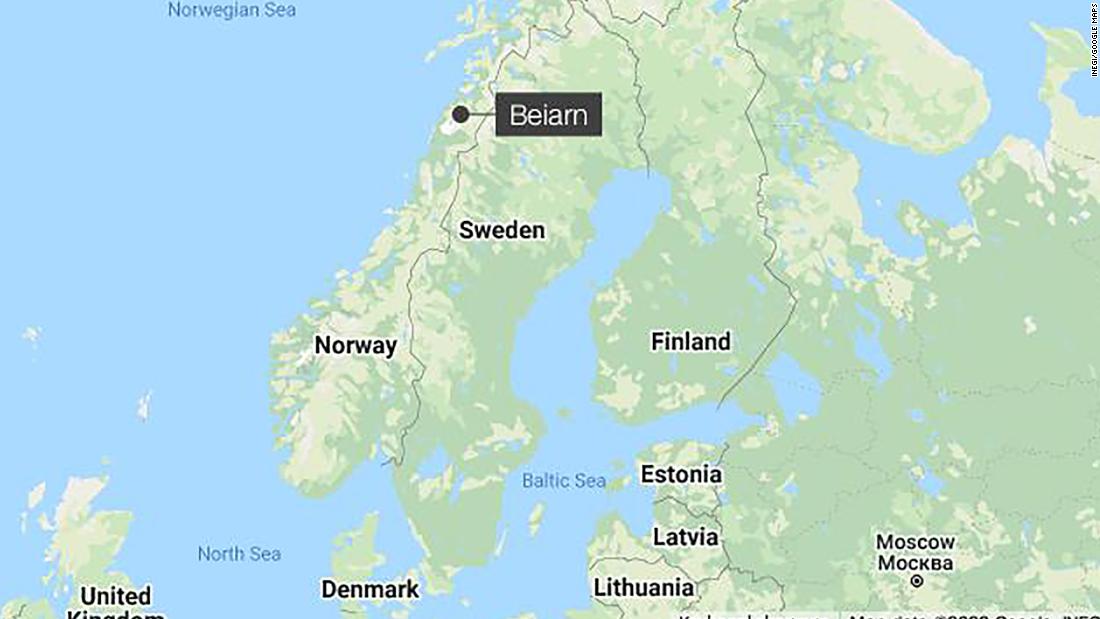
 edition.cnn.com
edition.cnn.com

4 US service members killed after aircraft crashes in Norway, PM says
Four US service members were killed when the aircraft they were traveling in crashed during NATO training exercises in Norway, the country's Prime Minister said Saturday.
Last edited:
It would appear that someone has obtained a copy of the 2022 DOT&E "controlled unclassified information" report, revealed the CMV-22B 'not operationally suitable' no other details given.
The CMV-22B Osprey is a variant of the MV-22B and is the replacement for the C-2A Greyhound for the Carrier Onboard Delivery (COD) mission for 44 aircraft which won out over the upgraded C-2A based on the E2D Hawkeye which was cheaper (MV-22B $80 million ea.) with longer range (1,400 nm vs 1,150 nm) and higher payload (10,000 lbs vs 6,000 lbs).
 insidedefense.com
insidedefense.com
PS Very sad news on the loss of the four crew of the MV-22B
The CMV-22B Osprey is a variant of the MV-22B and is the replacement for the C-2A Greyhound for the Carrier Onboard Delivery (COD) mission for 44 aircraft which won out over the upgraded C-2A based on the E2D Hawkeye which was cheaper (MV-22B $80 million ea.) with longer range (1,400 nm vs 1,150 nm) and higher payload (10,000 lbs vs 6,000 lbs).
DOT&E: CMV-22B 'not operationally suitable' | InsideDefense.com
The Navy's new CMV-22B tiltrotor aircraft that will deliver cargo to aircraft carriers is "not operationally suitable," according to the "controlled unclassified information" version of the Pentagon director of operational test and evaluation's annual report.
PS Very sad news on the loss of the four crew of the MV-22B
- Joined
- 16 April 2008
- Messages
- 9,605
- Reaction score
- 14,502
It would appear that someone has obtained a copy of the 2022 DOT&E "controlled unclassified information" report, revealed the CMV-22B 'not operationally suitable' no other details given.
The CMV-22B Osprey is a variant of the MV-22B and is the replacement for the C-2A Greyhound for the Carrier Onboard Delivery (COD) mission for 44 aircraft which won out over the upgraded C-2A based on the E2D Hawkeye which was cheaper (MV-22B $80 million ea.) with longer range (1,400 nm vs 1,150 nm) and higher payload (10,000 lbs vs 6,000 lbs).
DOT&E: CMV-22B 'not operationally suitable' | InsideDefense.com
The Navy's new CMV-22B tiltrotor aircraft that will deliver cargo to aircraft carriers is "not operationally suitable," according to the "controlled unclassified information" version of the Pentagon director of operational test and evaluation's annual report.insidedefense.com
PS Very sad news on the loss of the four crew of the MV-22B
Other sources provide a lot more detail, and as is often the case with DOT&E reports, it's mostly a lot of small details of shortfalls in reliability and availability.
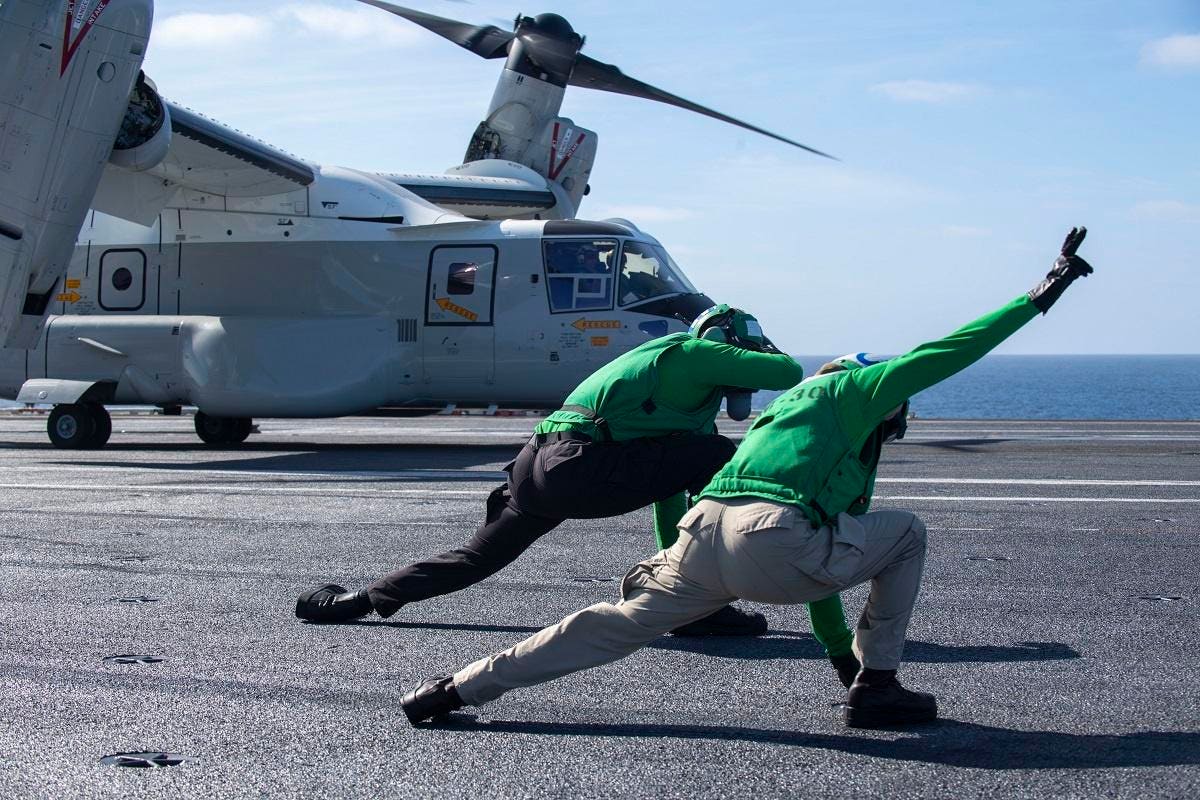
The Navy’s New CMV-22B Has Been Declared Operational Despite Operational Concerns
The Navy’s new carrier onboard delivery (COD) variant of the V-22 Osprey was given the green light for initial operational capability last December while on its maiden deployment on an aircraft carrier. But concerns about the tilt-rotor’s readiness and some of its communications equipment remain.
 www.forbes.com
www.forbes.com
Thanks, makes really depressing read eg some quotes/pointsIt would appear that someone has obtained a copy of the 2022 DOT&E "controlled unclassified information" report, revealed the CMV-22B 'not operationally suitable' no other details given.
The CMV-22B Osprey is a variant of the MV-22B and is the replacement for the C-2A Greyhound for the Carrier Onboard Delivery (COD) mission for 44 aircraft which won out over the upgraded C-2A based on the E2D Hawkeye which was cheaper (MV-22B $80 million ea.) with longer range (1,400 nm vs 1,150 nm) and higher payload (10,000 lbs vs 6,000 lbs).
DOT&E: CMV-22B 'not operationally suitable' | InsideDefense.com
The Navy's new CMV-22B tiltrotor aircraft that will deliver cargo to aircraft carriers is "not operationally suitable," according to the "controlled unclassified information" version of the Pentagon director of operational test and evaluation's annual report.insidedefense.com
PS Very sad news on the loss of the four crew of the MV-22B
Other sources provide a lot more detail, and as is often the case with DOT&E reports, it's mostly a lot of small details of shortfalls in reliability and availability.

The Navy’s New CMV-22B Has Been Declared Operational Despite Operational Concerns
The Navy’s new carrier onboard delivery (COD) variant of the V-22 Osprey was given the green light for initial operational capability last December while on its maiden deployment on an aircraft carrier. But concerns about the tilt-rotor’s readiness and some of its communications equipment remain.www.forbes.com
Cost an unbelievable $105 million each, more than a F-35A
Due the lack of cabin pressurization it cannot fly much above 10,000 feet with passengers (or practically with its aircrew) meaning it will likely have fly to through or around weather that it cannot easily fly above, could affect the Osprey’s operations and operational range, also has implications for the kind of medevac missions the CMV-22 can take on.
The nacelle improvements with more than 1,300 new V-22 part numbers to help improve reliability and maintainability (approx 60 percent of maintenance man hours are spent in the nacelles), for some unknown reason, cost?,are not built into the new CMV-22B, a CMV-22B suffered a starboard engine fire while stationary on Carl Vinson’s flight deck.
It did not meet a requirement for 75% operational availability or a metric to fly longer than 12.5 hours before an “operational mission failure”. The ice-protection system was insufficient, accounting for 25% of operational mission failures resulting in mission aborts.
The CMV-22’s HF radio - crucial for long distance communications over water - demonstrated “a 12% success rate for long-range, two-way communications.
- Joined
- 18 October 2006
- Messages
- 4,211
- Reaction score
- 4,920
DOT&E rarely gives a clean bill of health to any aircraft. I have heard/read/rumored that other than the P-8 series the C/MV-22 series still has the best safety record/flight hour in the US DoD. Until the recent circumstances were obtained it had the highest Operational Tempo in the US DoD.
I have heard/read/rumored for many years that the Admirals and Generals want the DOT&E report killed off as it can reveal the truth about their weapons system effectiveness, and it can be too embarrising, they partially succeeded this year as they convinced ret'd General Lloyd Austin the new Sec of Defense to only issue an abbreviated “controlled unclassified information” version of the DOT&E report (Austin is an exception as Congress normally insist on civilian as Sec of Defense so this would not be allowed).DOT&E rarely gives a clean bill of health to any aircraft. I have heard/read/rumored that other than the P-8 series the C/MV-22 series still has the best safety record/flight hour in the US DoD. Until the recent circumstances were obtained it had the highest Operational Tempo in the US DoD.
The DOT&E report has leaked out on the CMV-22B and you can see why the Marine Generals didn't want it released, a snippet from the Forbes article that sums up the military double speak, you would think the Colonel was a politician speaking "The DOT&E assessment also noted that the CMV-22’s HF radio - crucial for long distance communications over water - demonstrated “a 12% success rate for long-range, two-way communications.” Col. Taylor asserts that the HF radio reliability is “very good” LOL
Similar threads
-
-
US Navy Multi-engine Multi-Crewed Carrier Capable Training Aircraft - T-44 Replacement
- Started by Dynoman
- Replies: 66
-
-
Lockheed Martin F-16 Fighting Falcon Developments
- Started by seruriermarshal
- Replies: 630
-
Alternate history: Boeing won JSF
- Started by helmutkohl
- Replies: 45

